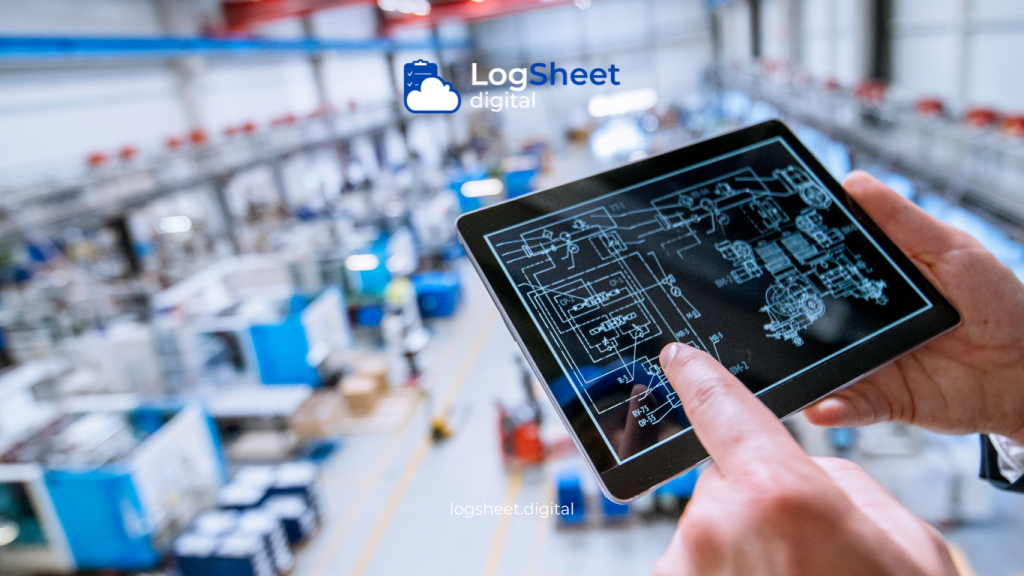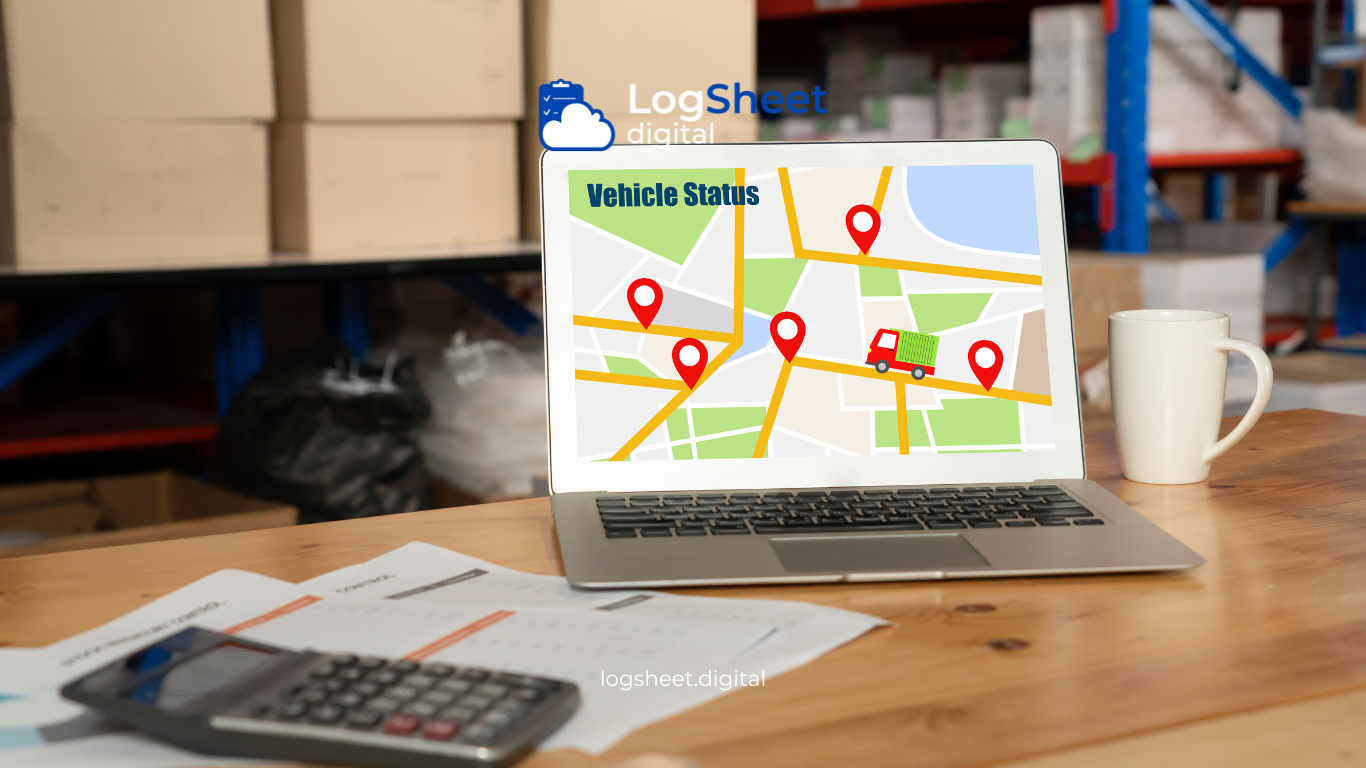Effective and accurate calibration is a crucial component in ensuring the quality of measurements from various industrial equipment. Failure to perform calibration correctly can lead to data inaccuracies, quality issues, and safety risks. To address these challenges, the use of digital logsheets is increasingly being adopted by various companies. This technology has proven to significantly enhance calibration management and ensure measurement accuracy. This article will discuss how digital logsheet assist in improving calibration for management and measurement accuracy.
1. Understanding Digital Logsheet and Its Benefits

Read More: Enhancing Security and Quality of Delivery: Digital Logsheet in Logistics
A digital logsheet serves as a software-based tool designed to replace manual logsheets that companies often use in the calibration recording process. With a digital logsheet, teams can record, store, and access calibration data automatically in digital form, making management and analysis easier.
1.1. Advantages of Digital Logsheet
There are several advantages offered by digital logsheets compared to manual recording methods:
- Data Automation: Reduces human error and improves accuracy.
- Time Savings: The calibration process becomes faster as recording is done automatically.
- Easy Access to Data: Data stored in the system can be accessed anytime and from anywhere.
- Automatic Calibration Reminders: The system can provide reminders for when calibrations should be performed, ensuring no equipment is overlooked.
1.2. Importance of Effective Calibration Management
Good calibration management is essential for maintaining the reliability of measuring instruments across various industries. By ensuring that measuring instruments are calibrated in a timely manner, companies can:
- Maintain Quality Consistency: Properly calibrated instruments produce accurate measurements, maintaining the quality of products or services.
- Minimize Risks: Measurement inaccuracies can lead to defective products, financial losses, and safety risks.
- Compliance with Standards: Many industries are regulated by standards that require periodic calibration of instruments.
2. The Role of Digital Logsheet in Calibration Management

Read More: Enhancing Delivery Certainty: Advantages of Digital Logsheet in Warehousing and Logistics
A digital logsheet is not just a tool for recording calibration results. This system can enhance the overall calibration management process by providing essential tools for monitoring, analysis, and calibration management.
2.1. Automation of Recording and Data Management
One of the main features of digital logsheets is the automation of calibration result recording. With direct integration between calibration devices and the digital logsheet system, measurement data can be imported automatically into the system. This not only saves time but also reduces manual recording errors that frequently occur.
2.2. Real-Time Calibration Progress Monitoring
Digital logsheets enable real-time monitoring of calibration progress. Users can easily see the calibration status of existing equipment, from those that have been calibrated to those upcoming. This monitoring helps avoid potential neglect or delays in calibration.
2.3. Automated Reporting and Data Analysis
With digital logsheets, companies can automatically generate calibration reports and analyze them to detect anomalies or trends that could affect measurement accuracy. Additionally, these reports can tailor to meet specific industry needs for regulatory compliance.
3. Improving Measurement Accuracy through Digital Logsheet

Read More: Integrating Fleet for Efficiency: Implementation of Digital Logsheet in Logistics
Measurement accuracy is a key element in successful calibration. With digital logsheets, companies can ensure more accurate and reliable calibration results.
3.1. Reduction of Human Errors
In manual systems, recording errors or oversights in data entry can lead to inaccuracies in calibration results. With digital logsheets, calibration results are directly recorded by software, eliminating the potential for human error. This makes the calibration process more consistent and reliable.
3.2. Consistency in Calibration Execution
Digital logsheets ensure that every instrument requiring calibration receives timely attention. The system provides automatic notifications to users when instruments are nearing their calibration deadlines. This consistency reduces the risk of inaccurate measurements due to uncalibrated equipment.
3.3. Integration with International Calibration Standards
Many digital logsheets have integrated with international calibration standards, such as ISO 17025. This integration ensures that every calibration process complies with global regulations and standards, helping companies maintain their reputation and reliability in measurement results.
4. Cost Reduction through the Use of Digital Logsheet

Read More: Enhancing Delivery Monitoring: Advantages of Digital Logsheet in the Logistics Industry
In addition to improving measurement accuracy, digital logsheets also provide benefits in reducing operational costs for companies.
4.1. Efficiency in Time Management
The use of digital logsheets reduces the time required for manual recording. Additionally, this system automatically tracks calibration status, allowing teams to focus on more critical tasks instead of just document management.
4.2. Reduction of Repair Costs
With tighter monitoring of calibrated equipment, companies can reduce the potential for equipment damage due to improper use or delayed calibration. This directly reduces repair or replacement costs for damaged equipment.
4.3. Savings on Paper and Storage Space
By transitioning to a digital system, companies can reduce paper use for calibration recording, which not only helps cut operational costs but also supports eco-friendly initiatives. Furthermore, digital logsheets eliminate the need for physical storage space for calibration documents.
5. Case Study: Implementation of Digital Logsheet in Industry

Read More: Implementing Logistics Management System with Digital Logsheet
Many industries have already experienced the benefits of implementing digital logsheets. One example is the pharmaceutical industry, where calibration accuracy is crucial for ensuring the quality of pharmaceutical products.
5.1. Efficiency Improvement in the Pharmaceutical Industry
A large pharmaceutical company reported a 25% increase in efficiency after adopting digital logsheets in its calibration management. This system enabled them to monitor every piece of equipment used in the production process in real-time, and they could analyze calibration results directly to ensure compliance with regulatory standards.
5.2. Cost Savings in the Automotive Industry
An automotive component manufacturer reported a 15% reduction in operational costs after using digital logsheets. These savings primarily came from reduced labor costs and fewer calibration errors that often occur in manual systems.
6. Challenges in Implementing Digital Logsheet

Read More: Digital Logsheet for Tracking and Monitoring Logistics Goods
Despite the many benefits of digital logsheets, companies face several challenges during the implementation process.
6.1. Initial Implementation Costs
The initial investment for implementing digital logsheets can be quite substantial, especially for small to medium-sized companies. However, in the long run, these costs can be offset by operational efficiencies and cost savings.
6.2. Training and Adaptation
Transitioning from a manual system to a digital one requires training for staff to become familiar with the new technology. Additionally, organizational culture adaptation to the new technology may take time.
6.3. Data Security
Transitioning calibration recording to a digital system brings data security risks. Therefore, companies must ensure that the digital logsheet systems used have good security features, including data encryption and restricted access.
7. Conclusion

Read More: Digital Logsheet: Development of Logistics Services and Improvement of Competitive Advantage
Digital logsheets are an effective solution for enhancing calibration management and measurement accuracy. With automation, reduced human errors, and real-time monitoring, digital logsheets can improve the efficiency and reliability of the calibration process across various industries. Furthermore, this system also provides operational cost reductions through savings in time, labor, and physical resources such as paper. Although there are challenges in implementation, the long-term benefits offered by digital logsheets make them a valuable investment for companies aiming to maintain high-quality standards and optimal measurement accuracy.






leave your comments